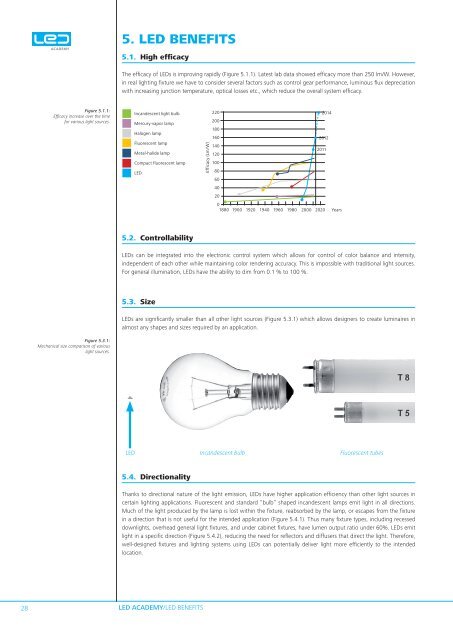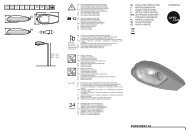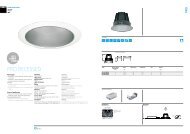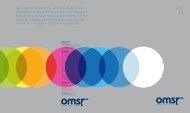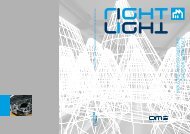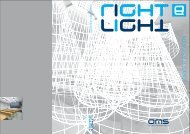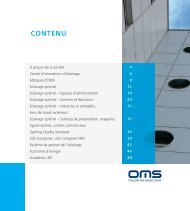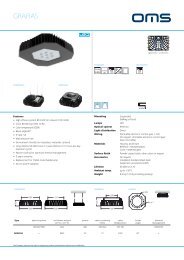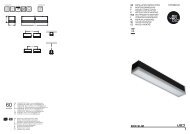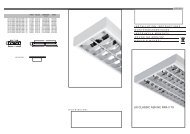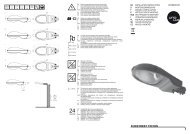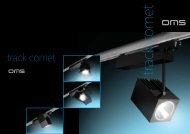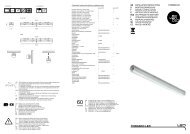Create successful ePaper yourself
Turn your PDF publications into a flip-book with our unique Google optimized e-Paper software.
5. <strong>LED</strong> BENEFITS5.1. High efficacyThe efficacy of <strong>LED</strong>s is improving rapidly (Figure 5.1.1). Latest lab data showed efficacy more than 250 lm/W. However,in real lighting fixture we have to consider several factors such as control gear performance, luminous flux depreciationwith increasing junction temperature, optical losses etc., which reduce the overall system efficacy.Figure 5.1.1:Efficacy increase over the timefor various light sources.Incandescent light bulbMercury-vapor lampHalogen lampFluorescent lampMetal-halide lampCompact fluorescent lamp<strong>LED</strong>Efficacy (Lm/W)220200180160140120100806040200188020111900 1920 1940 1960 1980 2000 202020142012Years5.2. Controllability<strong>LED</strong>s can be integrated into the electronic control system which allows for control of color balance and intensity,independent of each other while maintaining color rendering accuracy. This is impossible with traditional light sources.For general illumination, <strong>LED</strong>s have the ability to dim from 0.1 % to 100 %.5.3. Size<strong>LED</strong>s are significantly smaller than all other light sources (Figure 5.3.1) which allows designers to create luminaires inalmost any shapes and sizes required <strong>by</strong> an application.Figure 5.3.1:Mechanical size comparison of variouslight sources.<strong>LED</strong> Incandescent bulb Fluorescent tubes5.4. DirectionalityThanks to directional nature of the light emission, <strong>LED</strong>s have higher application efficiency than other light sources incertain lighting applications. Fluorescent and standard “bulb” shaped incandescent lamps emit light in all directions.Much of the light produced <strong>by</strong> the lamp is lost within the fixture, reabsorbed <strong>by</strong> the lamp, or escapes from the fixturein a direction that is not useful for the intended application (Figure 5.4.1). Thus many fixture types, including recesseddownlights, overhead general light fixtures, and under cabinet fixtures, have lumen output ratio under 60%. <strong>LED</strong>s emitlight in a specific direction (Figure 5.4.2), reducing the need for reflectors and diffusers that direct the light. Therefore,well-designed fixtures and lighting systems using <strong>LED</strong>s can potentially deliver light more efficiently to the intendedlocation.28<strong>LED</strong> <strong>ACADEMY</strong>/<strong>LED</strong> BENEFITS


